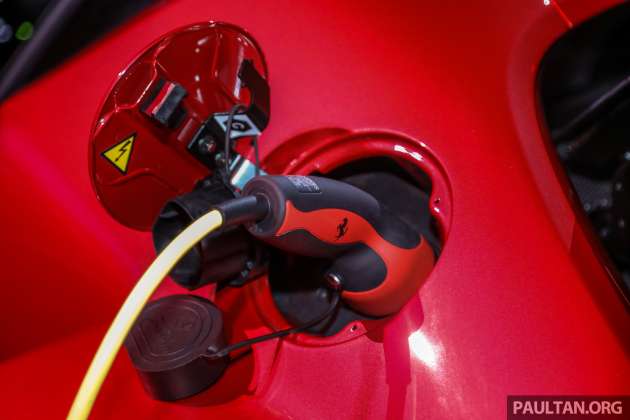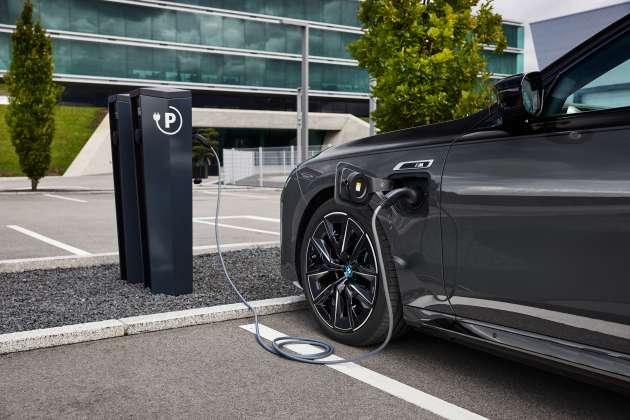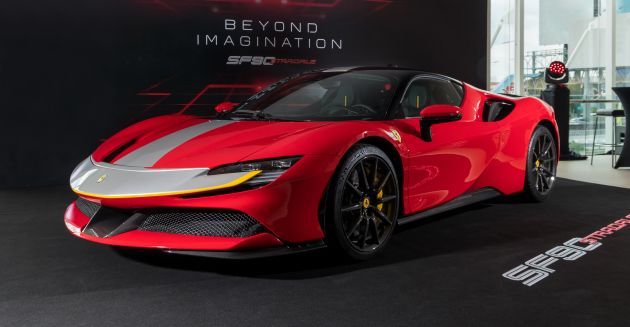Carmakers usually contend that plug-in hybrids are their stepping stone in the direction of full electrification, providing the silent, zero-emission operating of an electrical automobile with the comfort and hassle-free nature of a petrol- or diesel-powered automotive. This has contributed to a rising variety of PHEV gross sales in Europe, the place tightening emissions laws are forcing firms to construct increasingly more of those automobiles as a stopgap.
After all, we’ve recognized that the eco credentials of PHEVs aren’t fairly the slam dunk that carmakers have led us to imagine, provided that the driving habits of precise patrons differ vastly from the, let’s assume, optimistic nature of laboratory-based driving cycles like WLTP. However a new examine carried out by the European Atmosphere Company (EEA) has laid naked simply how massive a niche there may be between the gas consumption determine that’s claimed and what house owners are literally getting.
Crucially, the EEA obtained the information by means of the onboard gas consumption monitoring gadgets put in in automobiles offered within the EU – a requirement as a part of WLTP certification – that have been equipped by the carmakers. Whereas this offers a sure stage of scope for producers to control the information, it does imply that the information represents real-world utilization from precise clients, quite than simply one other take a look at carried out by boffins.
In all, the EEA obtained knowledge from 988,231 automobiles (together with 916,216 vehicles and 12,301 vans) out of the 9,821,479 registered within the EU, Iceland and Norway in 2021 – the primary 12 months the aforementioned measuring gadgets have been made obligatory. The company stated the examine aimed to measure the discrepancy between WLTP and real-world gas consumption and carbon dioxide emissions, in addition to suggesting methods to tweak the WLTP cycle to be extra life like.
What the EEA discovered was that automobiles powered by inner combustion engines registered gas consumption of seven.88 litres per 100 km, versus their claimed WLTP common of 6.13 l/100 km. This indicated that the drivers used round 1 to 1.5 l/100 km greater than official estimates. An identical hole existed between real-world (180.3 grams per kilometre) and WLTP (148.8 g/km) CO2 emissions, a distinction of 21.2%.
This hole widened to a chasm when it got here to PHEVs, which registered a whopping 3.5 occasions (252%) higher gas consumption (5.97 l/100 km) and CO2 emissions (139.4 g/km) in the actual world in comparison with their claimed WLTP averages (1.69 l/100 km and three.96 g/km respectively). The EEA stated the consequence confirmed that plug-in hybrids have been being charged and pushed in electrical mode a lot lower than anticipated, and that the assumptions used for calculating the WLTP take a look at don’t characterize real-world situations.
The excellent news is that for all of the fear-mongering about PHEVs being extra polluting than even pure ICE automobiles, the examine confirmed that plug-in hybrids nonetheless offered a web profit. On common, they did handle to eat much less gas and launch fewer emissions in comparison with their petrol- and diesel-powered counterparts – even when the discount is just by a median of 23%.
Some PHEVs did higher than others. For instance, Kia plug-in hybrids in-built Slovakia (that’s, the Sportage and Ceed) consumed a median of simply 3.87 l/100 km and produced simply 88.13 g/km of CO2. That’s nonetheless an enormous leap from the WLTP estimates of 1.48 l/100 km and 33.72 g/km respectively, nevertheless it’s spectacular nonetheless and proves that these vehicles both have been extra environment friendly or their house owners have been extra diligent in plugging them in to cost. It’s a comparatively small pattern, nonetheless – simply 82 vehicles have been registered right here.
On the flip facet, luxurious and efficiency PHEVs have been the worst offenders on the record, reflecting badly on each their vehicles’ relative inefficiency, shorter all-electric vary figures and their house owners lackadaisical charging attitudes. Porsche’s PHEVs had a median gas consumption of 10.79 l/100 km versus their WLTP estimate of three.03 l/100 km, whereas the only Bentley PHEV listed within the examine used a median of 12.97 l/100 km versus its WLTP estimate of three.6 l/100 km.
The worst of the worst, nonetheless, was Ferrari. Its 296 GTB and SF90 Stradale/Spider used a terrifying 20.06 l/100 km of gas on common versus their common claimed WLTP determine of 6.88 l/100 km. That’s not precisely shocking, provided that their electrical motors are primarily used for rising efficiency quite than for lowering gas consumption. What’s extra shocking is that they used far more gas than even Maranello’s notoriously gas-guzzling pure petrol fashions, which solely consumed a median of 16.28 l/100 km. Ouch.
These figures are in step with the EEA’s findings, which have been that heavier ICE automobiles like SUVs and luxurious vehicles produced 1.5 to 2.5 occasions extra carbon dioxide emissions than claimed, in comparison with a niche of 20 to 40 g/km for lighter automobiles. This provides to their already greater WLTP CO2 emissions figures and, given the broader trade development in the direction of bigger, heavier automobiles, offsets the beneficial properties being made by way of effectivity.
For its half, the EEA stated that it’s too early to establish tendencies in gas consumption and emission discrepancies, provided that the automobiles registered have solely been on the highway for one 12 months. Nonetheless, the hole for PHEVs is large, and the EU is already altering the way in which these figures are being calculated for plug-in hybrids. These adjustments might be utilized in two steps, from 2025 and 2027 onwards.
So keep in mind guys – simply since you purchased a plug-in hybrid doesn’t imply you’ll robotically save gas. The financial savings in gas payments and discount in emissions rely closely on how usually you plug your automotive in to cost, and when you don’t, you might even use extra gas and pollute greater than when you had simply purchased an ICE automotive to start with.
Seeking to promote your automotive? Promote it with Carro.



